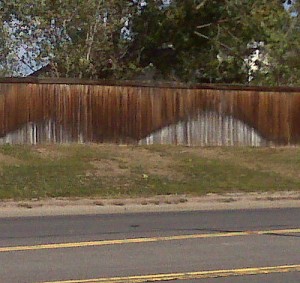by Matt Corrion
Converting an outdated landscape into landscaping that uses less water is not as hard as you might think. And there are many benefits!
One of the best ways to do this is to convert your high water-use landscaping into a Xeriscape (pronounced “zeer-escape”). This can be done anywhere- from a small home landscape, to a large commercial property.
Many people have an image of Xeriscape as a “sea of rocks, with a few cactus plants”. But Xeriscape can also be a lush, green and colorful landscape that is interwoven with flowering plants, textures, and beauty throughout each season. In my opinion it is much more beautiful and interesting than “traditional” landscaping.
The Top 10 Benefits Are:
10. Less Maintenance
9. Use Less Water & Better for the Environment
8. Prevent Water Damage
7. More Beautiful, Colorful & Unique
6. Better Wildlife Habitat
5. Less Fertilizers & Pesticides Needed
4. Better Suited to Your Site’s Unique Conditions
3. More Winter Beauty
2. Better Prepared for Drought
1. Saves You Money
Now I will discuss each benefit in greater detail and explain what each one can mean for you:
(more…)
Related Posts:
by Matt Corrion
This is my first in a series of “what not to do” posts related to landscape and site design.
One of the ways that I challenge myself to learn and to stay on top of the latest trends is to keep my eyes open for good and bad designs and ideas as I travel around my area or out of town.
The fence on the right is located near my home, in what appears to be an HOA (home owner’s association) maintained area next to a single family housing development. This is just one example of fences like this that can be found all over Denver. The root of the problem is that they have put sod directly against a wooden fence. Sod is typically irrigated by overhead spray and the water from the irrigation is discoloring and deteriorating the fence.
Problems with placing irrigation heads directly next to fencing
- Discolored fencing is unattractive: Obviously this is an aesthetics issue- these fences are a real eye-sore for these developments and the surrounding community. (more…)
Related Posts:
by Matt Corrion
As the cold temperatures arrive across much of the country, irrigation systems should be winterized to avoid damage.
Whether you are a commercial property owner/manager that is overseeing maintenance, or a do-it-yourself homeowner, you should know the basics of the winterization process. Here is a link to a good article from John Deere Landscapes that summarizes the winterization process nicely. The author is from Michigan, but the process is the pretty much the same for any place that has freezing temperatures.
Is it necessary to winterize? Some people choose to simply turn off the water and take their chances- I have talked to many people who have done just that without incurring any damage to their systems. Here in Colorado, we often have sunny warm days throughout the winter. However, we usually have at least a few days of zero-to-negative degree temperatures- and freezing temperatures can damage an irrigation system that has not been properly winterized. Bottom line: If you have invested a lot of care and money into your own irrigation system (or, you are providing maintenance for someone else’s) then it is well worth the small expense and effort to properly winterize.
This is the official blog of Outdoor Design Group, Colorado Landscape Architects. For more information about our business and our services, click here.
Related Posts:
